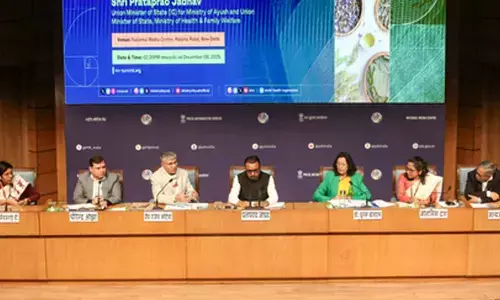Covid-battered services sector needs revival package

Covid-battered services sector needs revival package
While manufacturing and mining along with agri and power sector pick up pace, the key services areas of trade, hotels and transport remain at lower levels than in the pre-Covid era
The economy is on the path to normalcy but the recovery process is fragile at best. This is the broad assessment from a quick look at the latest data on the second quarter of the current fiscal released this week. The best bit of news is that the real GDP for this period was marginally higher than in the pre-Covid fiscal 2019-20. It was Rs3.57 lakh crore compared to Rs3.56 lakh crore previously. The overall growth rate is pegged at 8.4 per cent which seems commendable and in line with general expectations. But it becomes less impressive when considered in the backdrop of the low base of a 7.4 per cent contraction over the same period last year. In addition, a closer view of the data shows that though private consumption rose by over 8.6 per cent, it must be compared with an 11 per cent contraction last year. Equally, the absolute numbers are lower than the same period in 2019.
These numbers also show that while there has been a pick-up in manufacturing and mining along with agriculture and electricity, the key services areas of trade, hotels and transport remain at lower levels than in the pre-Covid era. Such contact-intensive sectors have been struggling to get back to normalcy. Many of these areas come within the informal sector and it is difficult to quantify the extent of revival or otherwise. They are also the most job-intensive segments of the economy and have contributed to the high level of unemployment right from the onset of the pandemic last year.
In the backdrop of the latest GDP data for the second quarter of 2020-2, it must be recognised that the biggest problem facing the economy right now is bringing job growth back on track. Surveys by the Centre for Monitoring the Indian Economy (CMIE) show the unemployment rate for November this year was 7.1 per cent, an improvement over 7.75 per cent in October. Jobs growth had improved, however, in September probably due to the onset of the festival season, with the month recording an unemployment rate of 6.86 per cent. But the problem of joblessness seems to be more acute in urban areas, as unemployment rates have been consistently higher as compared to rural areas. For instance in November, it was 8.2 per cent for urban areas as against 6.6 per cent for rural areas.
The combination of the performance of the services sector and continuing high levels of unemployment lead one to the inescapable conclusion that greater support needs to be given to this sector. The government's fiscally conservative policies have been criticised in the past as compared to the massive outlays on Covid recovery by other countries. In recent times, however, it has increasingly been felt that the more conservative approach has yielded results as the economy is bouncing back. Yet there are clearly lacuna in this carefully calibrated expenditure policy. Critical economic segments like services that now form as much as 55 per cent of GDP, need considerable support as they struggle to recover to pre-pandemic levels of revenues and operations.
The current year's budget did little to address the pain that contact-intensive sectors have been going through. At the time, there was a feeling that the economy was reviving and these sectors would rebound within a few months. But events took a darker turn in April and May as the second Covid wave took a drastic toll both on the health of the general public and on economic well-being. The setback owing to the second wave had its greatest impact on the contact-intensive sectors which again had to shut down after opening up to some extent in January and February 2021.
With Covid infections having fallen drastically and vaccinations having been stepped up, it is evident that tourism and hospitality industries are rebounding once again. Aviation companies are relieved as air passengers are thronging airports while the hospitality sector is also getting back to normal. Even so, many curbs remain on the modalities of opening up contact-intensive industries. The restrictions ensure that employment remains far below pre-pandemic levels.
The outlook has also become precarious with the discovery of yet another variant, identified initially in South Africa, and given the name of Omicron by the World Health Organisation (WHO). Till recently, leading epidemiologists here have been assuring that the Covid infection has become endemic in this country. Hence even if there is a third wave of infections, they have stressed, these are not likely to have as disastrous outcome as the second wave.
Yet the entry of the new variant has brought a new set of apprehensions. Even though reports indicate that it triggers mild symptoms which do not need hospitalisation, there is already a knee-jerk reaction by some countries which are shutting their borders in a selective manner. In such a scenario, there is again fear that the weakest sector of the economy - services and tiny enterprises - will face the brunt in case movement curbs are put in place.
With revenue collections becoming buoyant, it is time for policy makers to provide more targeted support for small and medium enterprises in contact-intensive sectors. The most vulnerable segments of the economy should not have to continue feeling the pain of the Covid-induced crisis.
A revival package should be formulated and launched as soon as possible. The GDP data may be encouraging but there is a large swathe of the economy, much of it in the informal sector, that is falling behind the others. The government must not wait any longer to take action on this front.














